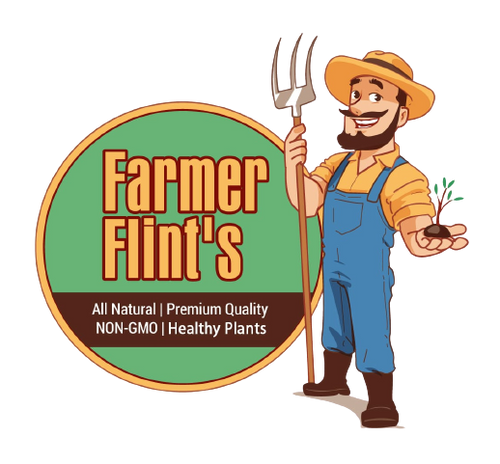Gardening is a timeless practice that nourishes not only the body but the environment. While much attention is given to soil quality, fertilizers, and sunlight, one vital aspect of sustainable gardening is often overlooked—natural pest control. In the quiet corners of thriving ecosystems, frogs play an indispensable role. Inviting frogs into your garden isn’t just about enhancing biodiversity; it's a highly effective method to combat pests organically.
In this comprehensive guide, you'll learn exactly how to attract frogs to your garden, why they are valuable allies in pest control, and how to create an environment that keeps them comfortable and safe year-round.
The Role of Frogs in Natural Pest Control
Frogs are considered bioindicators—organisms that reflect the health of their environment. Their presence often indicates a well-balanced ecosystem. But beyond their ecological symbolism, frogs are voracious insectivores.
What Do Frogs Eat?
Frogs feed on a wide variety of garden pests, including:
-
Slugs
-
Beetles
-
Caterpillars
-
Mosquitoes
-
Flies
-
Gnats
-
Grasshoppers
-
Ants
An adult frog can eat dozens to hundreds of insects per night, depending on its size and species. If you’re tired of chemical pesticides or manually picking pests off your plants, frogs can be the ideal, low-maintenance solution.
Why Choose Frogs Over Chemical Pesticides?
Here are some key reasons gardeners turn to frogs for pest control:
1. Frogs Are Self-Sustaining
Once established, frogs don’t require much intervention. Unlike sprays that need constant reapplication, frogs feed and breed on their own.
2. Non-Toxic to Plants and People
Chemical pesticides come with health risks, especially for children and pets. Frogs eliminate pests without any collateral damage.
3. Promote Ecological Balance
Introducing frogs into your garden supports a more diverse, resilient micro-ecosystem. They often attract birds and beneficial insects that further enhance plant health.
How to Attract Frogs to Your Garden
Attracting frogs is about mimicking their natural habitat. Let’s explore what you need to do.
1. Create a Water Feature
Water is non-negotiable. Frogs need moisture to keep their skin hydrated and lay their eggs.
Options Include:
-
A small pond
-
A shallow, shaded birdbath
-
A repurposed half-barrel
-
A man-made bog or marsh garden
Ensure that your water source has:
-
Shallow edges for easy entry and exit
-
Partial shade to prevent overheating
-
Plants like duckweed, water lettuce, or pickerelweed for coverage and egg-laying
-
No chlorinated water—use rainwater or dechlorinated tap water
Avoid adding fish if possible. Fish often eat frog eggs and tadpoles.
2. Add Native Plants and Ground Cover
Frogs like shady, moist places where they can hide during the day. Adding native plants and dense ground cover gives them shelter and humidity.
Ideal plants and cover:
-
Ferns
-
Hostas
-
Grasses
-
Moss
-
Leaf litter
-
Mulch (organic, chemical-free)
These offer cool retreats while attracting insects that frogs feed on.
3. Build Hiding Spots and Shelter
Frogs avoid open, dry areas and require safe places to hide from predators and the sun.
DIY Frog Shelter Ideas:
-
Upside-down broken clay pots with entry holes
-
Piles of rocks with open crevices
-
Hollow logs or stumps
-
Inverted coconut shells
-
PVC pipe buried horizontally and partially covered with soil
Ensure that shelters are shaded, humid, and positioned near water or moist soil.
4. Avoid Using Pesticides and Herbicides
One of the quickest ways to deter frogs—or worse, harm them—is through chemical applications. Amphibians absorb toxins through their skin, making them extremely sensitive to garden sprays.
Even if pesticides don’t kill frogs directly, they can:
-
Kill off the insects frogs feed on
-
Alter the pH of soil and water
-
Poison frog eggs and tadpoles
Commit to organic gardening practices if you’re serious about inviting frogs.
5. Minimize Lawn Mowing and Garden Disturbance
Frequent mowing or digging can destroy frog habitats and hiding spots. Keep areas around water features wild or semi-wild. This encourages a more permanent population to develop.
Leave some areas untamed:
-
Tall grass at pond edges
-
Leaf piles
-
Shrubby corners
-
Natural mulch under trees
6. Keep Cats and Dogs Away
Domestic pets, especially cats, are a significant threat to frogs. If you have outdoor pets:
-
Keep them away from frog-friendly areas
-
Install low fencing or barriers
-
Train dogs to avoid ponds
Predation is one of the leading causes of frog population decline in residential gardens.
7. Light at Night: Less Is More
Frogs are nocturnal and prefer darkness. Artificial lights can disrupt their natural behavior, reducing feeding and mating.
If you must use garden lighting:
-
Use solar-powered path lights that dim automatically
-
Position lights away from water features
-
Use motion-activated lights instead of static ones
8. Add Logs, Stones, and Moist Crevices
Even without a pond, you can attract terrestrial frogs like toads. Simply offer damp, earthy spaces where they can burrow or sit during the heat.
Toads are especially useful in dry climates and feed heavily on crawling pests like beetles and slugs.
How to Maintain a Frog-Friendly Garden
Once frogs arrive, maintaining a consistent environment is key.
Monitor Water Levels
Keep ponds filled during dry spells. Install a rain barrel for sustainable watering.
Avoid Disturbing Egg Clusters
If you notice gelatinous clusters floating in water, leave them alone. These are frog eggs and hatching success depends on being undisturbed.
Watch for Predators
Birds, snakes, raccoons, and even fish will eat frogs. Create plenty of cover and avoid introducing fish to your pond.
Create a Year-Round Habitat
Frogs hibernate in winter. Provide leaf piles, logs, or compost where they can safely burrow and overwinter.
Types of Frogs You May Attract
Not all frogs are suited to every region. Here are a few common species often found in backyard gardens:
1. American Green Tree Frog (Hyla cinerea)
-
Size: 1.25 – 2.25 inches
-
Region: Southeastern U.S.
-
Eats: Mosquitoes, moths, flies
-
Attracted to: Moist, wooded gardens with water features
2. Northern Leopard Frog (Lithobates pipiens)
-
Size: 2 – 4 inches
-
Region: Northern U.S. and Canada
-
Eats: Beetles, crickets, worms
-
Attracted to: Cool, vegetated water edges
3. American Toad (Anaxyrus americanus)
-
Size: 2 – 3.5 inches
-
Region: Eastern and Central U.S.
-
Eats: Slugs, ants, caterpillars
-
Tolerant of: Dry conditions
4. Pacific Tree Frog (Pseudacris regilla)
-
Size: 1 – 2 inches
-
Region: Western U.S.
-
Eats: Aphids, mosquitoes, tiny insects
-
Known for: Their distinct “ribbit” sound
Frog Myths and Misconceptions
Myth 1: Frogs Cause Warts
False. This is an old myth with no scientific basis. Frogs have bumpy skin, but they do not transmit warts or other skin conditions.
Myth 2: Frogs Are Dangerous for Pets
Frogs are only dangerous if eaten, and only a few species have mild toxins. Most backyard frogs are harmless.
Myth 3: You Need a Large Pond
Even a small, shallow container with plants can attract frogs. Size is less important than water quality and habitat design.
Conclusion: Frogs as Garden Guardians
Attracting frogs to your garden is one of the most effective and sustainable methods of pest control. These small amphibians work tirelessly at night, consuming unwanted bugs, promoting biodiversity, and contributing to a healthier garden ecosystem.
By providing a consistent water source, plenty of cover, and a pesticide-free environment, you can create a haven that frogs will not only visit but inhabit. Whether you garden in a rural landscape or a suburban backyard, there's always space to welcome these humble allies.
Instead of fighting pests with synthetic chemicals or costly traps, let nature lend a hand. With a bit of planning and care, your garden can buzz with life—and peace—thanks to its newest green residents.







